Perhaps one of the most easily recognizable flowers in springtime is the lily of the valley. If you want to grow these graceful little bell-shaped blooms in your own yard, you’ve come to the right place.
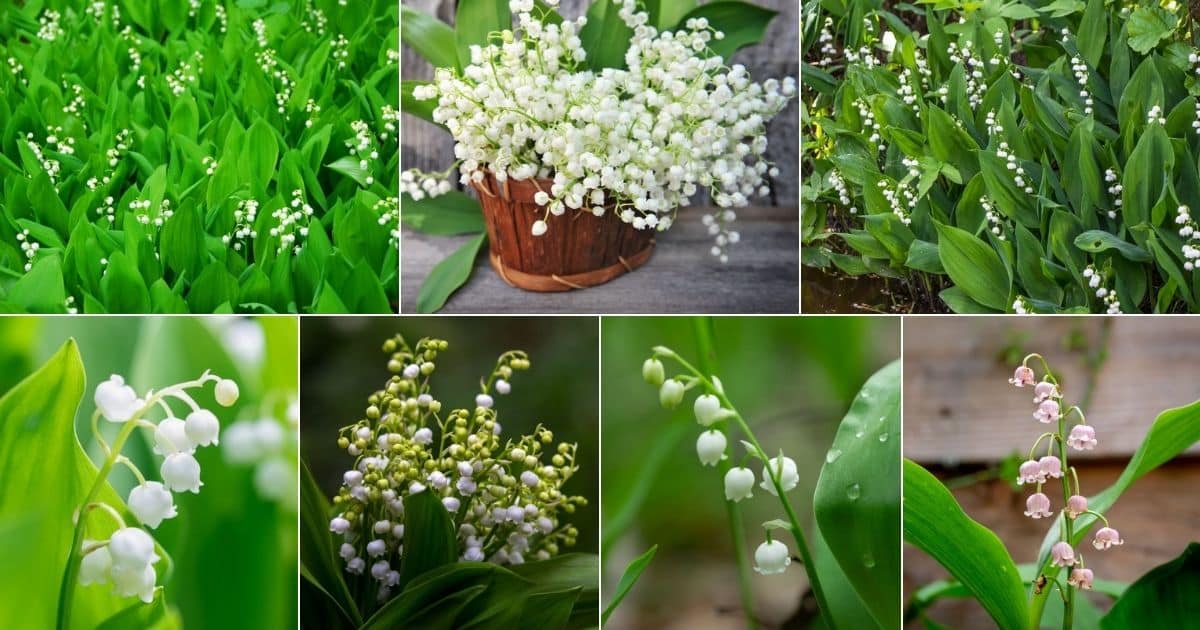
This guide will go over everything you need to know to get started growing lilies of the valley. Skip to any section in the advanced jump below, or read on.
Jump to:
- What Are Lilies of the Valley?
- Lily of the Valley Basics
- Where Do Lilies of the Valley Grow?
- Why Grow Lilies of the Valley?
- Lily of the Valley Landscaping Ideas
- Recommended Lily of the Valley Varieties
- When Do Lilies of the Valley Bloom?
- How Long Do Lilies of the Valley Bloom?
- When to Plant Lilies of the Valley
- Ideal Growing Conditions for Lilies of the Valley
- How to Plant Lilies of the Valley
- How to Care for Lilies of the Valley
- How to Divide Lilies of the Valley
- Recommended Planting Combinations for Lily of the Valley
- Frequently Asked Questions About Growing Lilies of the Valley
- Where to Buy Lilies of the Valley
What Are Lilies of the Valley?
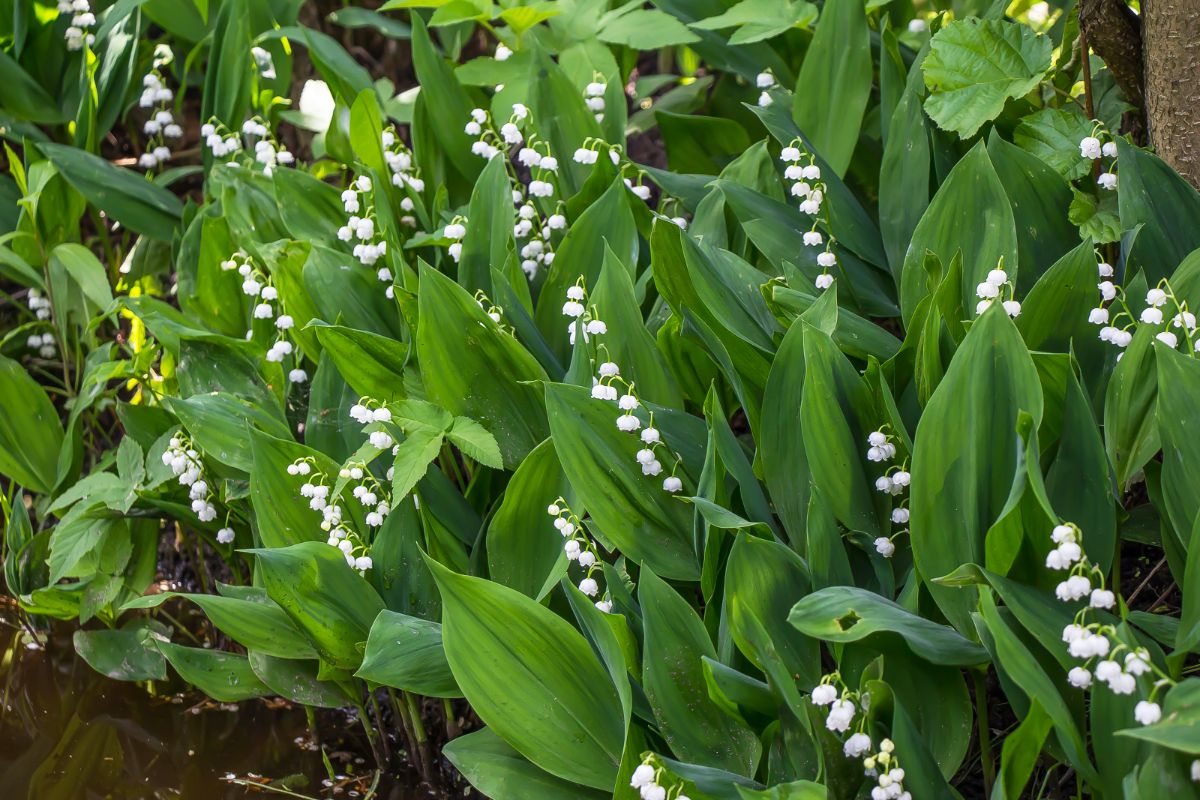
Lily of the valley is the species with the scientific name Convallaria majalis. The common name can be written with or without dashes.
Sometimes, lily of the valley is also referred to as “May bells,” “Mary’s tears,” “Our Lady’s tears,” “glovewort” and “Apollinaris.”
It may surprise you to learn that lily of the valley is not a true lily. True lilies belong to the genus Lilium.
Indeed, lilies are not even in the same family as lilies of the valley. True lilies are in the lily family, but lilies of the valley are members of the asparagus family.
Lilies of the valley are perennials. They return every year to blossom anew and fill your garden with delight in spring.
After lilies of the valley produce their nodding flowers, they produce red berries. While the berries are attractive, you should not eat them! Lilies of the valley are poisonous (see the FAQ for more details).
Lilies of the valley are often found growing in the woods, but they are also cultivated in gardens as ornamental perennials.
Lily of the Valley Basics
| Zones: | 3-7 |
| Blooming season: | Spring and summer |
| Expected height: | Up to 12 inches |
| Soil: | Most but well-drained |
| Sun: | Full sun, partial shade or full shade |
Where Do Lilies of the Valley Grow?
This plant is native to Europe and Asia. One specific type of lily of the valley called the montana variety is native to North America. But nowadays, lily of the valley is cultivated widely around the world anywhere in zones 3-7.
Why Grow Lilies of the Valley?
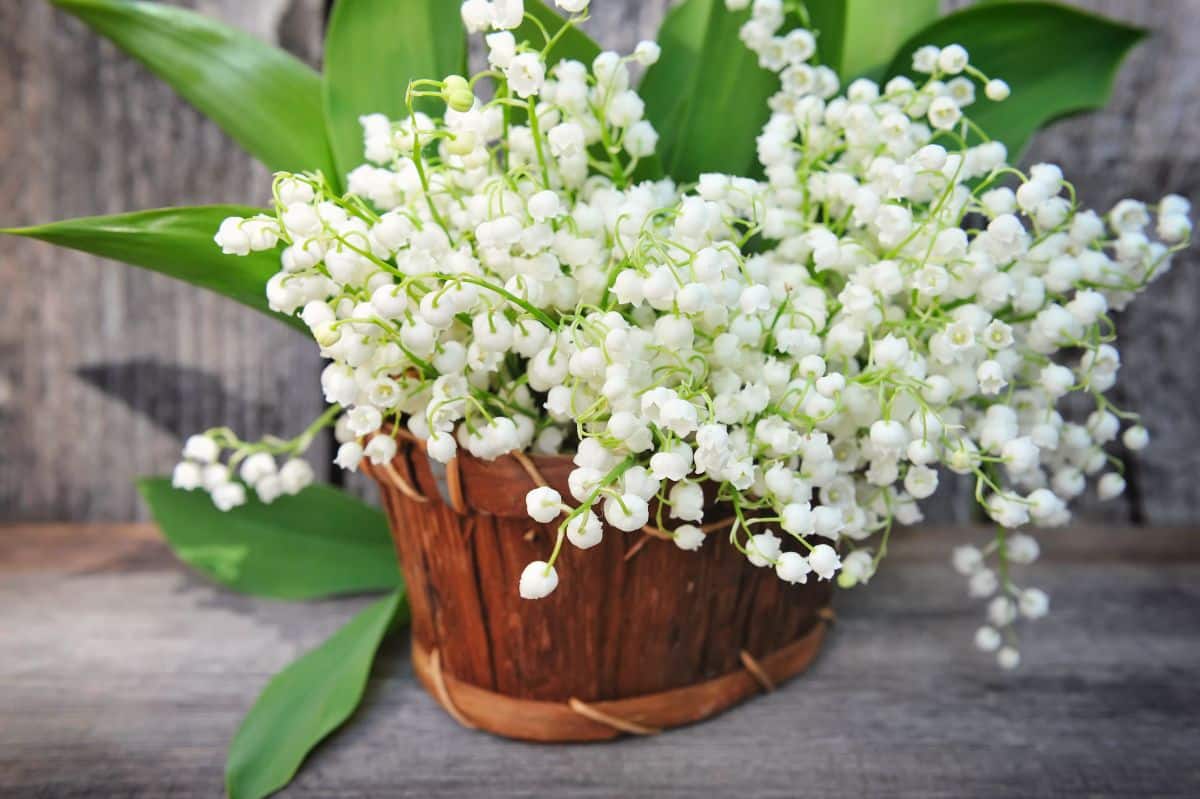
Here are some reasons to grow lilies of the valley in your perennial garden:
- Lilies of the valley make lovely cut flowers, and are especially popular in wedding bouquets and arrangements. If you take care of them, they can look beautiful in a vase for as long as a week.
- This tough plant can flourish in a range of conditions, and best of all, it can do it without a lot of help from you. It may not be a zero maintenance plant, but it is as close to one as you are going to find. That makes these pink and white flowers perfect for a beginning gardener.
- Not only are the flowers beautiful, but the berries are also aesthetically pleasing, adding bright pops of red to your landscape. North Carolina Extension says, “If you wish to enjoy the bright red berries then genetically different plants must be placed in proximity of each other to promote cross pollination.”
- Lily of the valley is the ultimate groundcover solution for shady gardens. While the flowers may be diminutive, the foliage can take up plenty of space. It also spreads effortlessly, so if you are trying to get rid of a large barren patch, this will do it. Depending on your climate zone, the foliage may also be evergreen.
- More good news—lilies of the valley tend to be disease-free and pest-free. There are exceptions, of course, but these plants are usually un-harassed because of their toxicity.
- Lilies of the valley like moisture, but they are also drought-tolerant.
- The versatility of lily of the valley makes it suitable for a broad range of landscaping applications (see below).
- The sweet fragrance of lily of the valley can waft around nicely. You will probably come to associate it with the arrival of spring each year.
Lily of the Valley Landscaping Ideas
Here are some of the best ways to use lilies of the valley to enhance your landscape:
- Cottage gardens: Lilies of the valley can add some textural interest in your cottage garden, planted in front of larger, more voluminous perennials.
- Woodland gardens ground cover: Lily of the valley is a happy plant when grown in a shade garden. It can help you conceal bare patches of ground that are otherwise unsightly.
- Rock gardens: The delicate blooms of lilies of the valley can go a long way toward bringing vivacity and elegance to a rock garden.
- Moon garden: The white lily of the valley flowers will stand out well in the moonlight against the darker leaves.
- On slopes: If you are having a hard time getting other plants to grow successfully on slopes, you might try planting lilies of the valley. They do a good job withstanding erosion.
Recommended Lily of the Valley Varieties
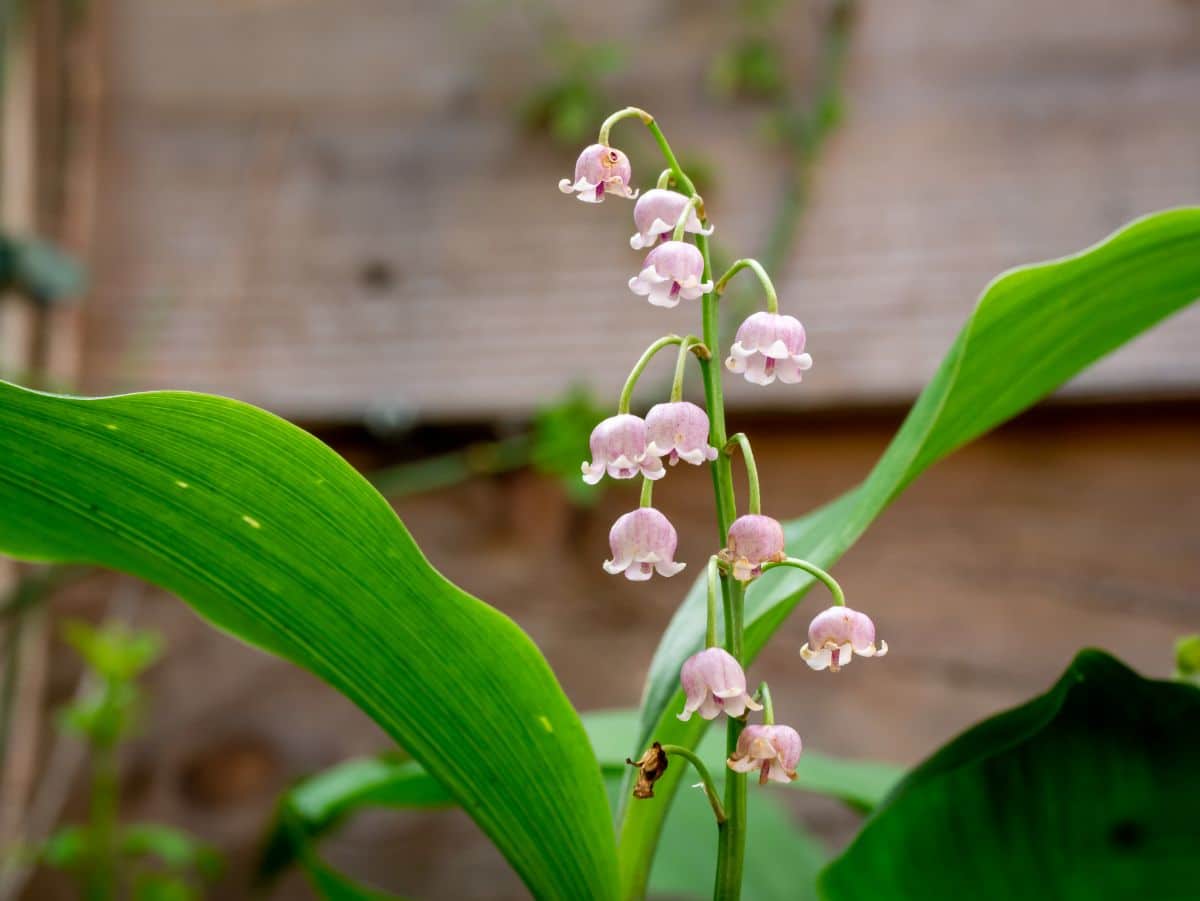
There are quite a few different cultivars of this plant to consider for their beautiful blossoms and sweet fragrance.
- Rosea: If you want pink flowers, you can plant the “Rosea” cultivar. But you should be aware that there is quite a bit of variation between individual plants that are part of this cultivar. Sometimes, you will find yourself with deep pink blooms. Other times, you might end up with a plant that has really pale pink flowers.
- Fernwood’s Golden Slippers: Want a cultivar of lily of the valley that does not feature deep green leaves? The foliage of this cultivar is yellowish in hue, and looks particularly glorious when the bright light of the sun shines through it. The flowers are white, though some sources say they turn a golden color themselves as the season progresses.
- Fortin’s Giant: Looking for larger flowers on your lily of the valley? Then you may want to order “Fortin’s Giant.” You can enjoy the blossoms in summer. Just be aware that this cultivar is known for being a particularly fast spreader.
- Albostriata: The white bells on this cultivar have a delicate appearance. The foliage also stands out with the white markings on the leaves.
- Dorien: This cultivar is another option if you want larger blossoms.
- Flore Pleno: Did you know that lily of the valley plants can sometimes have double flowers? This delightful cultivar is one example.
- Bordeaux: Yet another cultivar that is renowned for its bigger blooms is “Bordeaux.”
- Prolificans: This cultivar does exactly what you might guess given its name—it produces a prolific yield of blossoms every year.
- Hardwick Hall: This cultivar is known for golden edges.
For whatever reason, it is more challenging to locate photos of lily of the valley cultivars than it is to find photos of most other perennial flower cultivars. And even if you do find photos, it can still be hard to tell the plants apart.
So, if you are ordering lily of the valley plants online or you are starting from seeds you have purchased, you should try and be flexible about the outcomes. It may be hard to figure out exactly what you are getting until your plant arrives and starts to flower. But that can be part of the fun. Whatever you get is bound to delight your senses!
When Do Lilies of the Valley Bloom?
Generally speaking, lilies of the valley bloom in spring. But cool climates delay the bloom period. That means that depending on where you live, your lilies of the valley might bloom into summer.
How Long Do Lilies of the Valley Bloom?
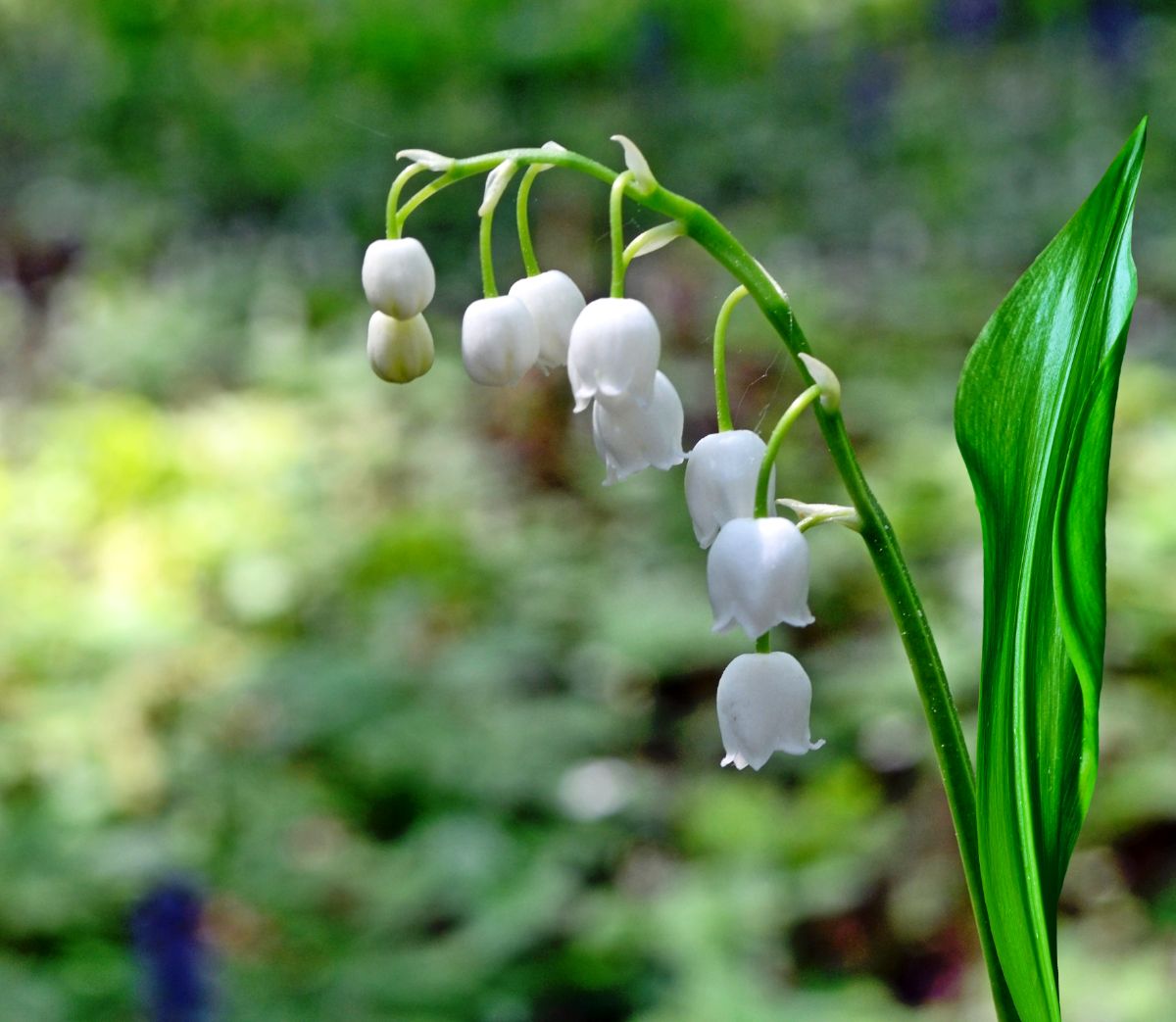
The bloom time for lilies of the valley is around 3-4 weeks.
When to Plant Lilies of the Valley
Lily of the valley is among the plants that require winter dormancy. As a result, the appropriate season for planting is fall.
Will it bloom the next spring? Maybe, maybe not. If you are lucky, you will be greeted by little nodding bells. But if not, do not be discouraged. The flowers should bloom starting the following season.
Ideal Growing Conditions for Lilies of the Valley
What growing conditions do lily of the valley plants need to flourish? Let’s check out their sun, soil and water requirements.
How Much Sun Do Lilies of the Valley Need?
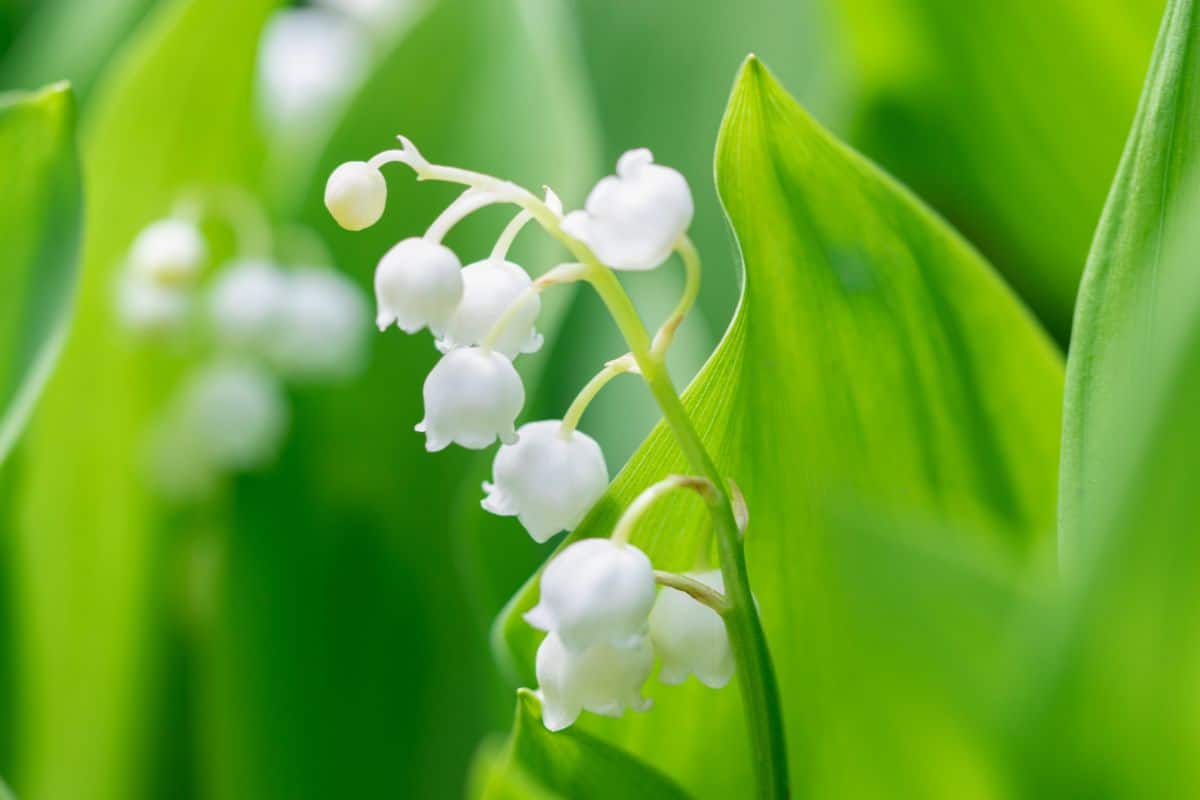
Partial shade or full shade are ideal for lilies of the valley; these plants will not be happy in full sun.
That does not mean indirect sunlight is all they can tolerate. But they should not be planted where they will get the full blast of afternoon summer sun. Any direct sunlight they get should be early in the day.
What Type of Soil is Right for Lilies of the Valley?
To know what soil types are ideal for lily of the valley, just picture the forest floor where these plants are most at home.
In the shade of the trees, the forest floor tends to stay moist. It also tends to be rich in organic material.
You should aim to replicate those conditions as closely as you can, planting your lilies of the valley in moist soil that drains well. If you have sufficiently rich soil, it may not require any amendments. But with poor soil, some compost or manure can be helpful.
Neutral or acidic soil is suitable for lilies of the valley. If you have alkaline soil, you should try and lower the pH. Compost can take care of this in some cases. If your soil is still too alkaline, you can try adding sulphur or aluminum sulfate.
While moist, well-draining, rich soil is best for lilies of the valley, you will be impressed by how readily they can adapt to different soil conditions.
For example, you can get away with planting them in clay soil, so long as you can ensure sufficient drainage (amendments can help).
You also can plant them in poor soil if you amend it and fertilize, allowing you to grow them even in rock gardens.
How Much Water Do Lilies of the Valley Need?

For the first couple months after you plant lily of the valley, you should water it every week. After that, you can back off depending on the weather.
While lily of the valley is a drought-tolerant plant, that does not mean it is good for it to dry out. When the soil starts getting dry, you should water it. Sufficient precipitation may take care of your plant’s watering needs, depending on your climate.
Make sure you do not over-water lily of the valley. Moist soil is good, but wet soil is not.
How to Plant Lilies of the Valley
The best way to plant lilies of the valley is starting with nursery plants. Below, we explain how to do just that. After those instructions, we explain how you can start lily of the valley from seed if you wish.
Container Planting
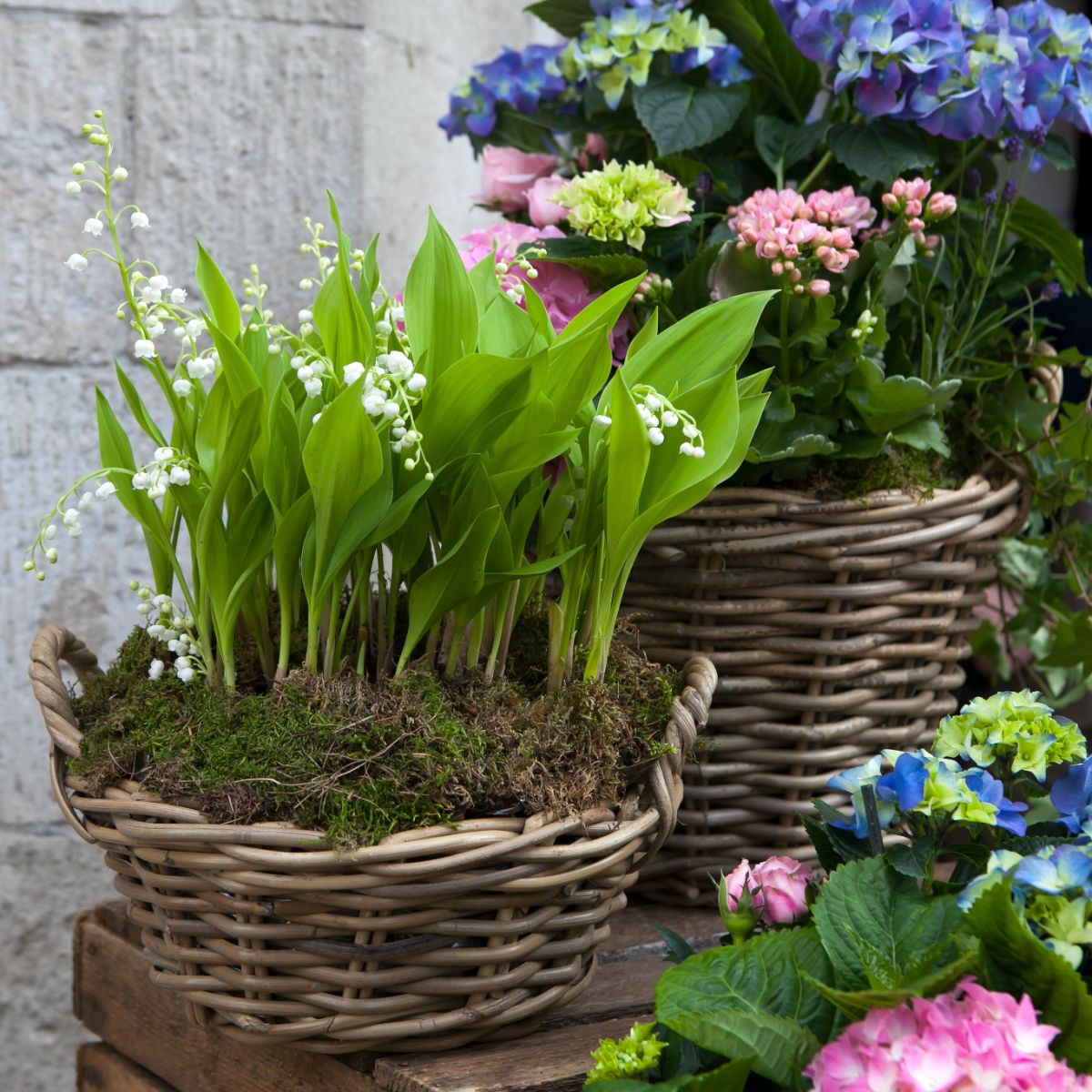
Because lilies of the valley can spread aggressively, they are particular suited to container gardens. Pots can help contain them, preventing a takeover of your garden.
- Choose a deep container that has sufficient room for the long roots of lily of the valley. Ensure that there are holes for drainage.
Do not be surprised if you have a hard time finding a pot that can handle the size of the roots of your nursery plant. If necessary, you can cut off the bottom couple inches of the roots, but no more than that.
- Soak the rooted crowns for 30 minutes in water.
- Fill your container with potting mix and plant your rhizome(s). Give them each about 2 inches of space. Make sure the buds are covered with a little potting mix.
Remember, soil in containers dries out rapidly compared to soil in the ground. Your potted lilies of the valley may require more water than those in your flower beds.
Ground Planting
Planting lily of the valley in your garden beds is pretty similar to planting it in your pots. Here are the steps.
- Choose a location for your lilies of the valley, and consider amending the soil with organic material such as compost or manure.
- Dig holes for the rhizomes. Remember they need to be spaced apart around 2 inches.
- Insert the rhizomes into the holes with the buds facing up.
- Take a moment to spread out the roots a bit.
- Backfill the soil, and water well.
Starting Lilies of the Valley from Seed
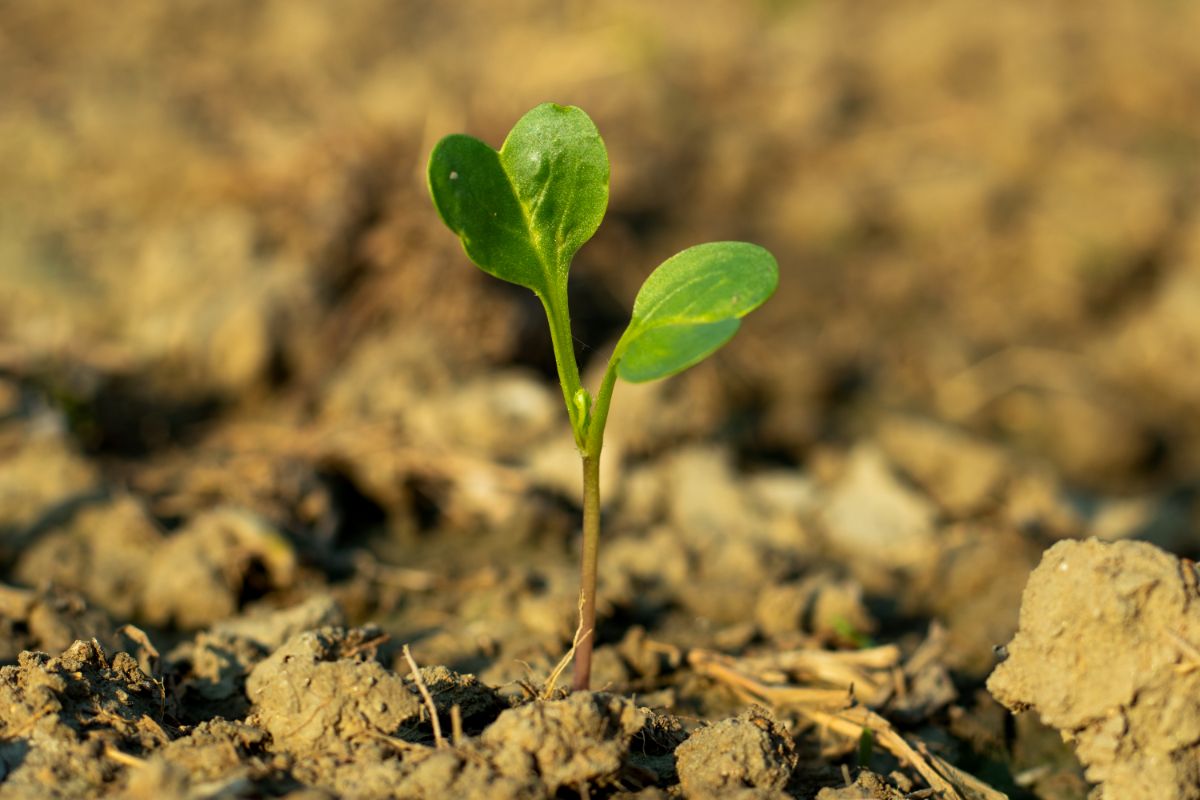
Be warned that it can be challenging and slow to successfully start lily of the valley from seed. If you are up for that challenge, here is how to do it.
- Either harvest the seeds from your existing lilies of the valley or buy them.
- Cold stratify the seeds. You have to do this with lily of the valley seeds because they have hard coatings. View detailed instructions for cold stratifying seeds.
- Fill flats with appropriate potting mix.
- Sow the seeds in the flats.
- Put a layer of compost and gravel on top.
- Find a shady spot outdoors, and make holes for the flats. Put the flats in the ground.
- Wait for the seeds to germinate. This process may sometimes take as long as a year. So, be sure to label where you put the seeds so you do not disturb them.
- Eventually, you should see the seedlings pop up. When they do, you can dig the flats out of the ground and transplant the seedlings carefully to larger containers.
- After the seedlings grow a bit more, transplant them into nursery beds.
- Wait for your seedlings to mature for a couple of years. Once they have had a chance to become reasonably well-established, you will be able to transplant them into their permanent homes in spring or fall.
You can see now why we recommend sticking with nursery plants and divisions, rather than relying on seeds! It is quite involved and takes a long time to start lilies of the valley from seed.
How to Care for Lilies of the Valley
Now that you know how to plant lilies of the valley, you are ready for some care tips. And guess what? This beautiful plant requires next to no care. You will be amazed by how little you need to do to enjoy its bell-shaped flowers every year.
How to Fertilize Lilies of the Valley
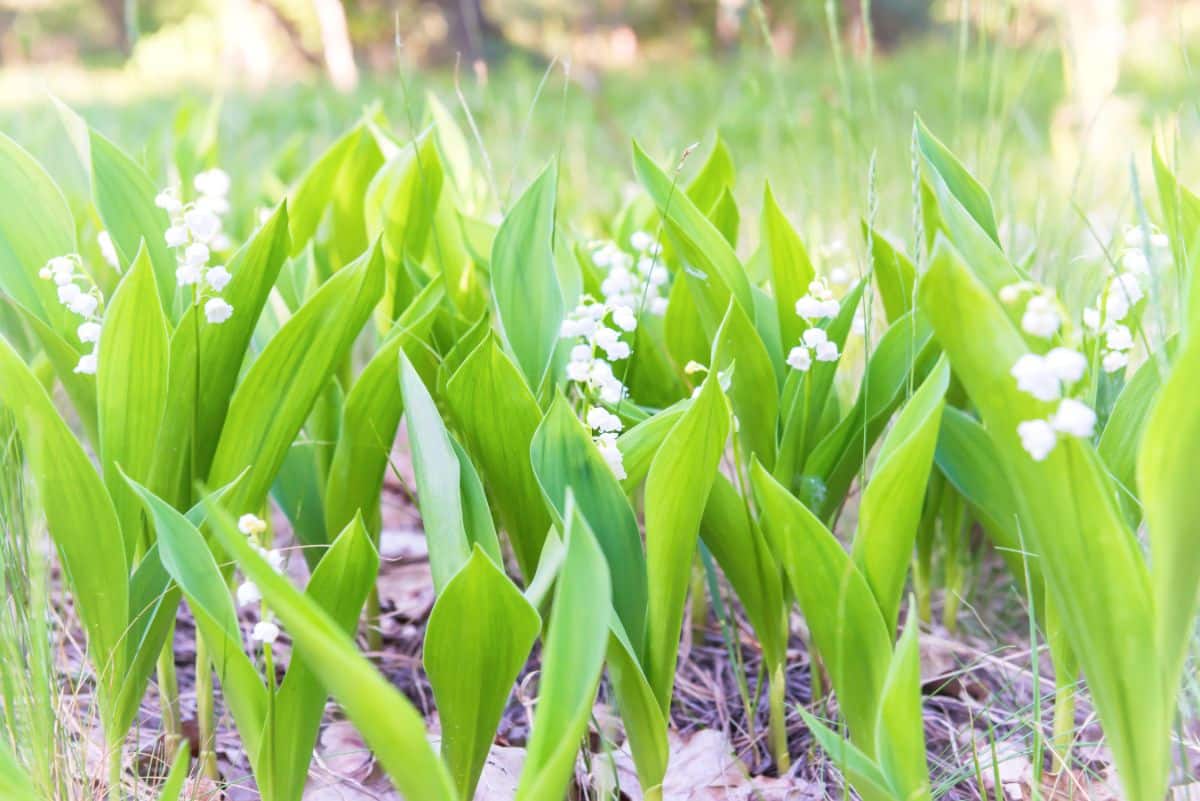
In most situations, this perennial plant can thrive fine without fertilizer. But if you are planting lily of the valley in poor soil, you may need to fertilize it in spring each year. Try using a slow-release granular fertilizer.
How to Mulch Lilies of the Valley
One type of care lilies of the valley can benefit from is mulching, especially if you have a hot climate. Mulching can help slow the evaporation of moisture from the soil.
Just put a couple of inches of wood chips on top of the soil. Be sure to stay away from the stems of the plants, however, so you do not promote rot.
How to Stake Lilies of the Valley
Lilies of the valley are not tall plants, and do not require any staking.
How to Prune Lilies of the Valley
Pruning lily of the valley is ridiculously easy. In fact, depending on your scenario, you might not need to do it at all.
How to Deadhead Lilies of the Valley
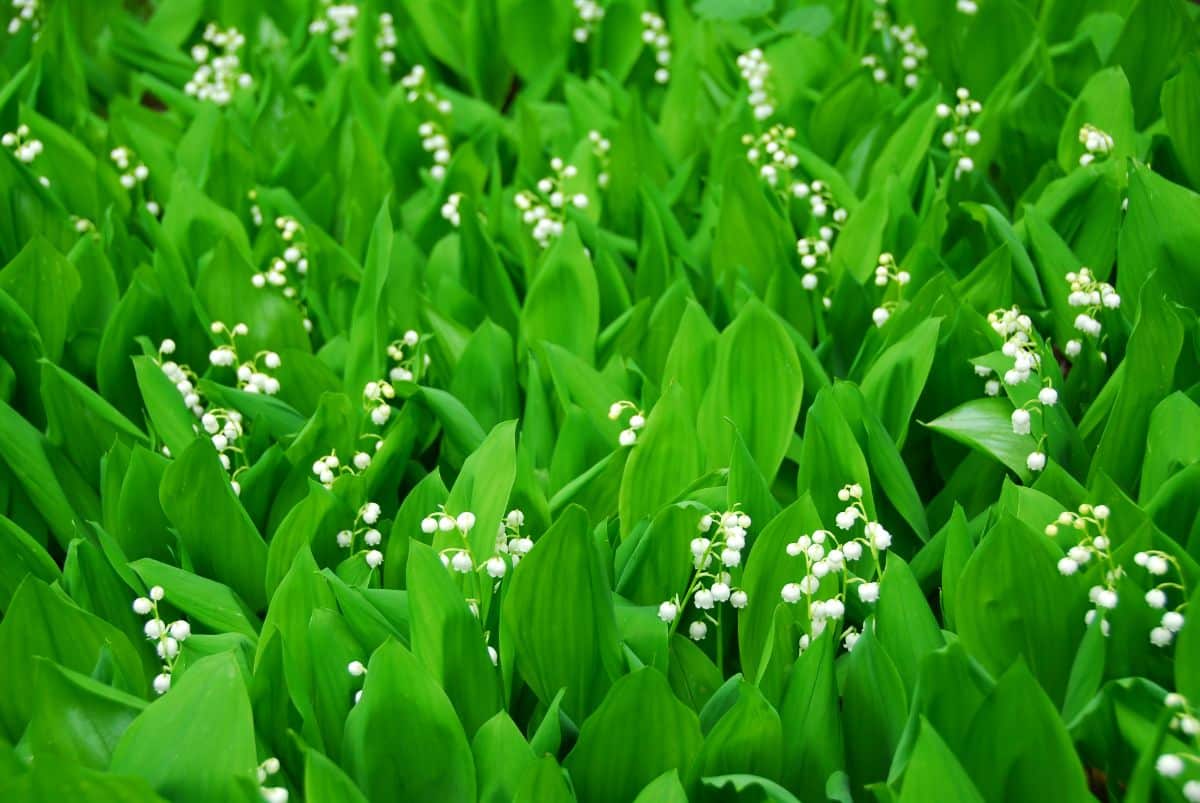
For starters, you may be wondering if you need to deadhead lilies of the valley. We are pleased to let you know this is totally unnecessary.
When to Cut Back Lilies of the Valley
What about trimming back lilies of the valley when the season ends? Well, if you live in a climate where the foliage is green all year, then there is no reason to trim it back. Enjoy the color it brings to your winter garden.
If, on the other hand, you live in a climate where the foliage does die, you might want to cut it back just to tidy up your plants when the season is at an end.
How to Divide Lilies of the Valley
There is no better way to propagate lilies of the valley than by dividing them. Dormancy is the best state for lily of the valley to be divided in. So, you should tackle this chore in fall around 4-6 weeks before you expect the first hard freeze. If you get a hard freeze sooner than that, the roots of the newly-divided plants may have their development disrupted.
- The day before you plan to divide your lily of the valley, water it.
- If you have not already trimmed back your plant for the winter, do so now.
- Use a trowel to dig a circle around the lily of the valley. So long as you stay about 8 inches away from it at all times, you should be able to avoid damaging it.
- Push underneath the plant and push it up out of the ground.
- Wipe away excess soil to give yourself a better view, and then either use a trowel or your hands to separate the pips.
- Check for rotten pips, and throw them away if you find them.
- Amend the soil as needed, and plant the newly-divided lilies of the valley.
- Backfill the soil and water well.
Are Lilies of the Valley Vulnerable to Diseases or Pests?

A number of diseases are known to occasionally affect lilies of the valley. Some of these include southern blight, leaf spot, rust and anthracnose. To learn about these diseases in detail and what to do with them, we suggest taking a look at the guide provided by PennState Extension.
Some beetles and caterpillars may munch on lily of the valley, and slugs and snails might give it a taste as well. But for the most part, you can expect it to be left alone.
Deer, rabbits and other mammals usually are wise enough to stay away from lily of the valley because it is toxic. See the FAQ for more information.
Recommended Planting Combinations for Lily of the Valley
Here are a few plants that may thrive next to lilies of the valley:
- Azaleas: You can plant lilies of the valley in front of azaleas to fill in the space below them. The lilies of the valley should appreciate the shade from the azaleas.
- Ferns: Like lilies of the valley, ferns make excellent groundcover in wooded gardens. They will also add textural variety.
- Coral bells: Rather like lilies of the valley, coral bells produce dainty but attractive blooms and gorgeous foliage. Plant a variety that is tolerant of shade.
- Hostas: These beautiful plants can thrive in shady conditions, just like lily of the valley. They produce foliage with a bluish tint, which can make a cool contrast alongside the leaves of lily of the valley.
Since lilies of the valley tend to repel deer and rabbits, you might also consider planting it alongside any plants you do not want these species to target. The scent of the lily of the valley may help keep them away.
Frequently Asked Questions About Growing Lilies of the Valley
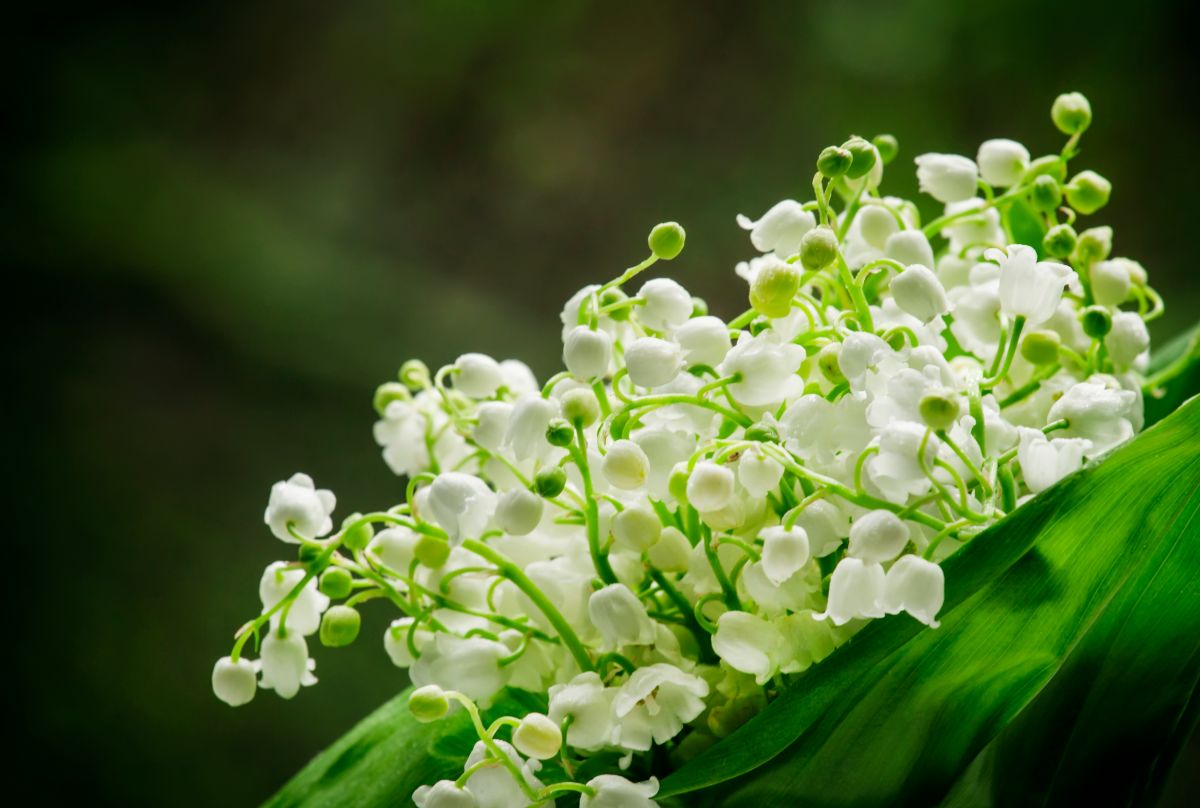
If something is eating your lilies of the valley, slugs, snails, beetles or caterpillars are the likeliest suspects.
Yes, these plants can easily take over a yard and spread beyond. You probably will need to use barriers to keep them contained, or plant them in containers where it will be harder for them to spread.
Yes, very. The FDA says, “Both lily-of-the-valley and the gloriosa or flame lily are very dangerous to cats and dogs. Lily-of-the-valley contains toxins that cause the heart to beat abnormally. This abnormal heart rhythm can be life-threatening. Other signs of toxicity include vomiting, diarrhea, and weakness.”
If you believe your pet has consumed lily of the valley, that warrants an immediate run to the vet.
Lilies of the valley are typically white and sometimes pink. But they do not come in rainbow colors. You will see photos that appear to depict rainbow lilies of the valley, but they are fake. Do not purchase seeds from sellers who post these images. They are just trying to con you out of your money, and you will be disappointed by the results.
Yes, lilies of the valley are toxic to humans as well. You should not consume any part of the plant, and should make sure children know it is poisonous. Symptoms of lily of the valley poisoning include nausea, vomiting, abdominal pain, and irregular heartbeat.
The main meaning associated with lily of the valley is happiness. But it also is associated with purity and sincerity. You will notice it is a popular flower to feature during wedding celebrations.
Where to Buy Lilies of the Valley
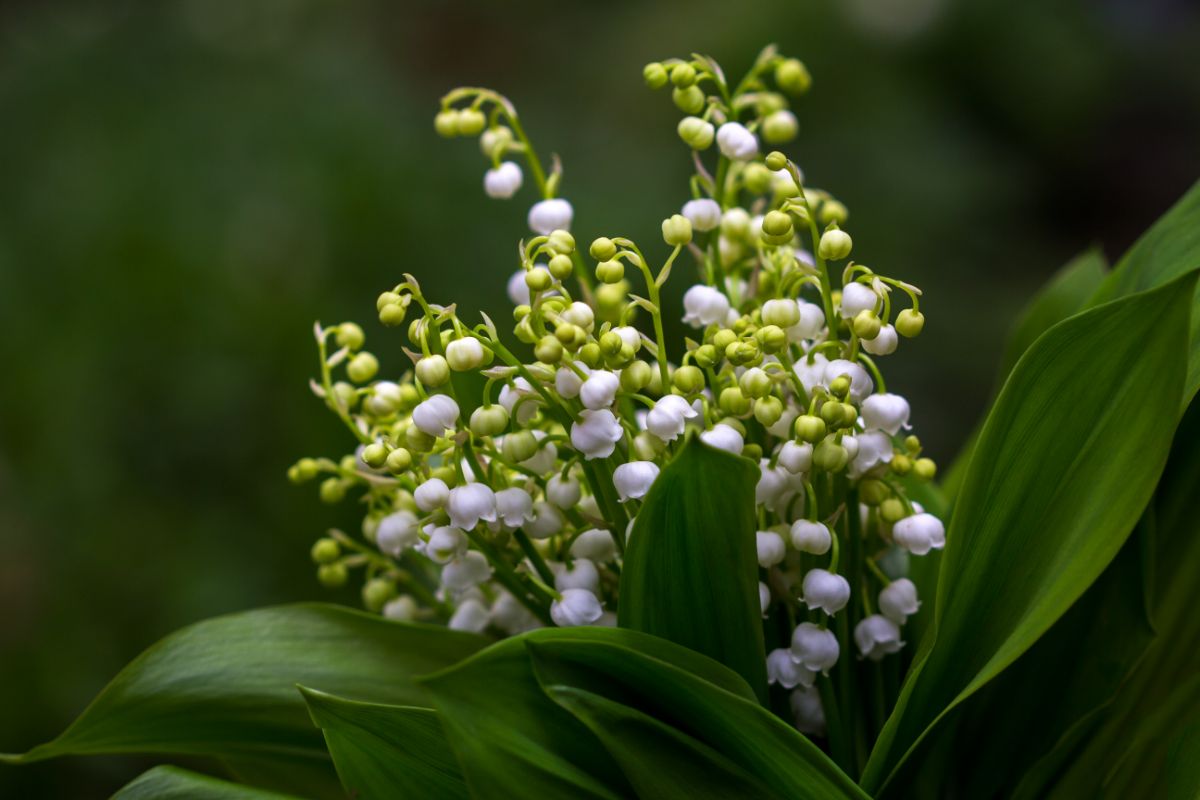
If you are enchanted with these nodding bells and want to grow them in your own perennial garden, click the link below to shop lilies of the valley now.

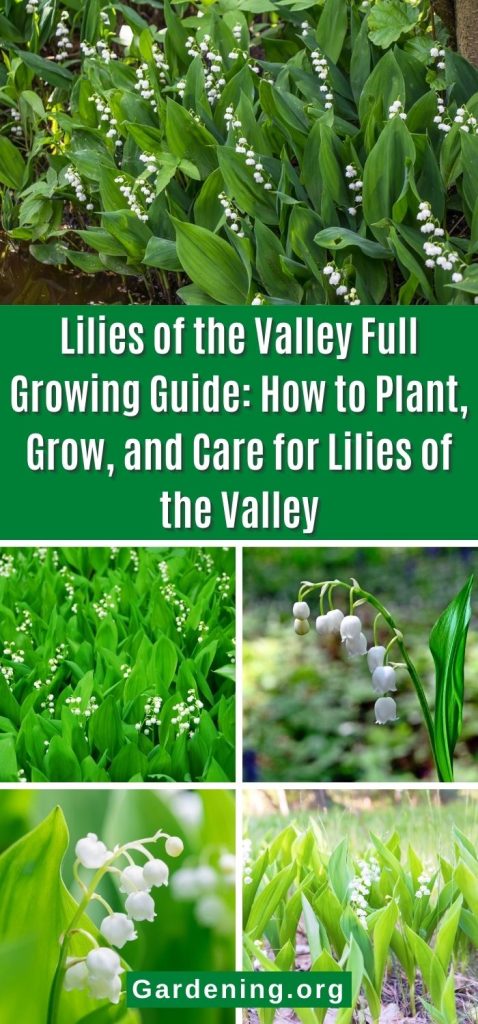
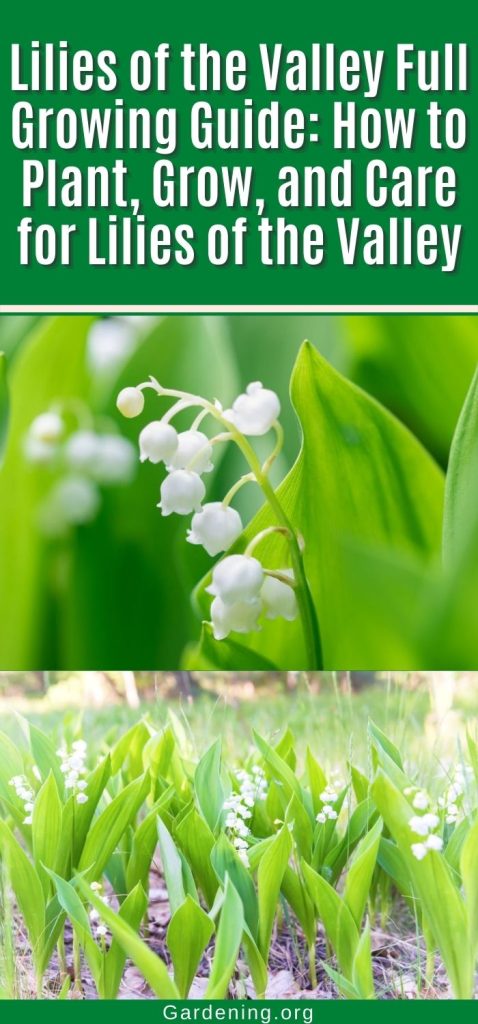
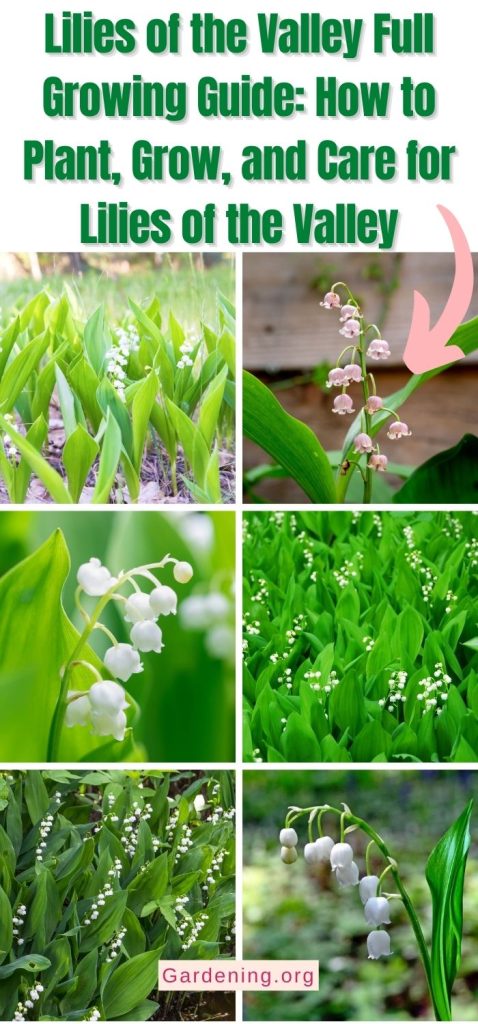
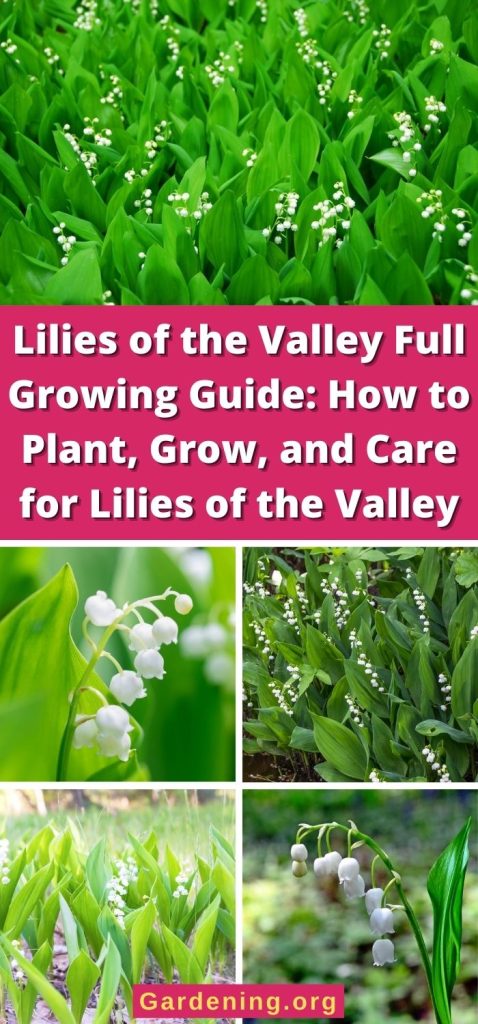
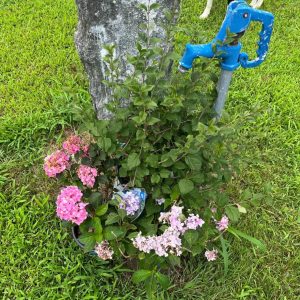
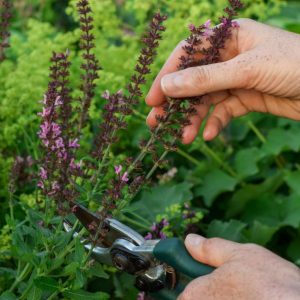
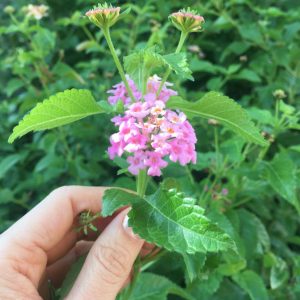

Debra Baker
Is it toxic to smell Lillies of The Valley?
Mary Ward
No. It's only toxic to eat them.
Debra Baker
What does Lillies of The Valley smell like? I’ve always heard they smelled wonderful?
Mary Ward
Hmm. A bit hard to describe. They are a scent all their own. It is a strong fragrance, especially for such a small flower. Subtly and warm and sweet, I guess a bit of vanilla-musk with a touch of fresh linen? I'm probably not doing a good job describing this, but I do find that most scented candles, etc get the scent right, so if you come across one and smell it, that's a good representation. Not exactly the same, but close.